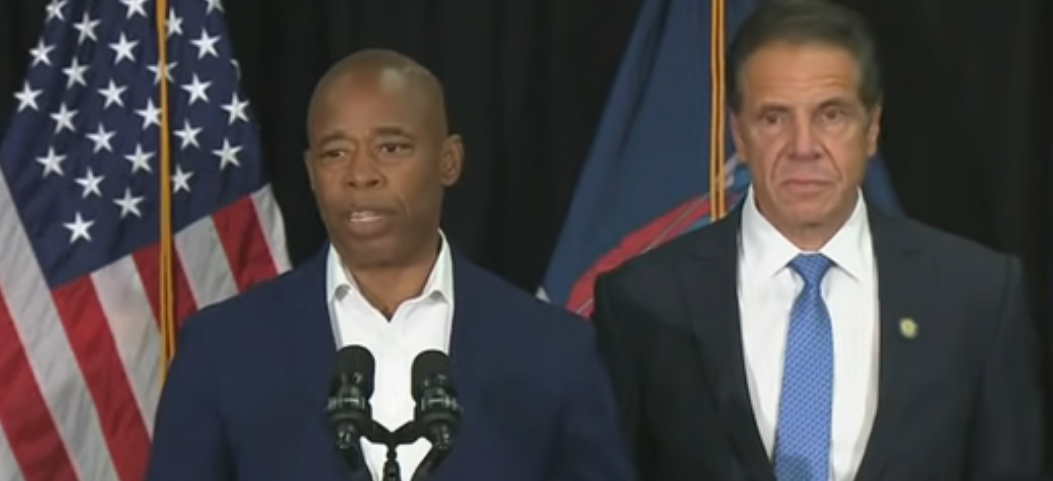Elombe Brath
Elombe Brath had carried on Malcolm X’s mission which was to reconnect Africans in America with the African motherland.
He did a brilliant job in the many years he lived after Malcolm was assassinated in 1965.
On May 19, on Malcolm’s birthday, Elombe joined the ancestors.
He had been confined to the Amsterdam Nursing Home, in Harlem, for the past several years, having suffered several debilitating strokes.
By the time Elombe Brath died at the age of 77, he had already established a legendary reputation here in the United States and in Africa. In Harlem Brath was referred to as the walking Encyclopedia in deference to his grasp of African history and politics.
He was born in Brooklyn and grew up in Harlem.
Brath visited many African countries — and as for the ones he didn’t, he may have met people from those countries. He could strike up a conversation with a visitor from any African country and discuss the history, politics, and culture.
Brath rubbed shoulders with many African presidents, including some whom he knew while they were guerrilla fighters struggling to liberate their country from colonial rule and White minority rule. They included men like: Sam Nujoma, later president of Namibia; Samora Machel, who later led Mozambique; and, Robert Mugabe, president of Zimbabwe.
The zenith of Elombe Brath’s interaction with African leaders was when he was involved in arranging to bring Nelson Mandela to Harlem in 1990.
Elombe Brath, like Malcolm before him, knew the power that could be harnessed and unleashed if Africans in the Diaspora and those on the continent worked closely together. The continent has immense resource wealth; Africans in America and elsewhere can help marshall resources and skills for development. Elombe worked to build the necessary bridges and to dispel the myths and stereotypes created through many centuries of separation that kept Africans apart.
During the 1960s, when political decolonization was taking place in Africa, Malcolm had made a memorable speech in which he declared to Africans in America that “you can’t hate the roots of a tree without hating the tree” and “you can’t hate Africa without hating yourself.”
Malcolm said during colonial rule corporate media had intentionally promoted an image of Africa as a continent filled with “savages” and “jungles” and “animals” to turn Africans in the Diaspora away from the continent — and to make them believe that they had actually been rescued from degradation.
Malcolm also observed, on the image of Africa during the colonia era: “They projected Africa always in a negative light. Jungles, savages, cannibals, nothing civilized. Naturally it was so negative that it was negative to you and me. And you and I began to hate it.”
Malcolm himself traveled to Africa and met with many leaders.
This is the same journey that Elombe Brath continued until he was felled by illness. Elombe, like Malcolm, knew that Africans in America had been taught to hate Africa, and to regard the continent as the antithesis of civilization and human progress.
Decades ago, Elombe knew that he had to produce images that would counter the racist stereotypes and also to offer lectures that would place contemporary events in Africa in perspective — to decipher the corporate media slant.
During the 1960s Elombe, with his brother Kwame Brathwaite and others, launched Afro-centric fashionshows with models who were melanin- rich to dispel the notion that only melanin-light women were beautiful.
The shows were called The Grandassa Models and were held from 1962 to 1979.
This was the era of embracing Africa and Black Pride and the shows’ organizers promoted the “Black Is Beautiful” slogan. Brath and Kwame also created The African Jazz Arts Society & Studio.
When Elombe traveled to Africa through the decades it was never for his personal pleasure. He learned much from the leaders he met; and from the students; the leaders of union movements; workers; African professionals; and teachers and artists.
Upon his return Elombe Brath would share his findings through lectures around the country and through his radio show, Africa Kaleidoscope, on WBAI radio. Many of his lectures are available on Youtube.
Elombe was one of the earliest activist and scholar to speak consistently about conditions in the Sudan.
In the 1960s Malcolm had organized protests and rallies after the murder of Congo’s independence leader Patrice Lumumba. It was through Malcolm’s activism and lectures that many Africans in America became familiar with the CIA’s role and that of Belgian mining interests in Lumumba’s death.
During a brilliant presentation at the Oxford Union debates, Malcolm showed how Western corporate media demonized Lumumba to pave the way for his assassination, while burnishing the image of Katanga’s Moise Tshombe, a stooge for corporate interests.
Elombe continued this exercise, showing the malevolent role of Western companies in fomenting violence and wars in Congo, while plundering resources from the country. He created the Patrice Lumumba Coalition in 1975.
The system for corporate plundering from Africa is the same as it was in the 1960s — Mobuttu Sese Seku and Tshombe are gone; today the companies use the malevolent dictators in neighboring countries, Gen. Yoweri Museveni of Uganda, and Gen. Paul Kagame of Rwanda, to help them plunder from Congo.
Elombe discussed these murderous machinations on his radio shows and in his lectures. He knew, as Malcolm did, that Africans in America could play a major role in protecting the continent.
Elombe educated many Africans in America and created many Pan-Africans.
Gil Noble, host and producer of the great weekly show “Like It Is,” owed much of his embrace of Pan-Africanism to Elombe Brath. Gil always shared how in his youth he had been wary of Malcolm X’s militant lectures. “We were taught that ‘Negroes’ weren’t supposed to talk like that,” Gil would recall, using the term then popular in the 1960s — a term Brath played a role in helping to abolish from usage.
Brath, as a graphic artist and consultant on “Like It Is”, helped attract African scholars of renown on the show and also shared his knowledge of the continent with Gil. Viewers became accustomed to watching interviews with the likes of: Dr. Yosef Ben-Jochannan; Professor John Henrik Clarke; Professor Leonard Jeffries; Dr. Ivan van Sertima; Joy DeGruy; and many others.
Visitors to Gil Noble’s office would have also been impressed with the books that lined his shelves: on African history, politics, arts, and culture.
Elombe Brath and Gil Noble made a powerful pairing; two Pan-African giants. Now they are both gone. Noble died on April 5, 2012, the year after he too had suffered a stroke.
These are the occasions of momentary fear.
Who will carry on the mission of reconnecting Africans in Diaspora with the motherland? Where are the new voices?
The march will continue.
A new generation, inspired by Elombe Brath, just as he himself had been inspired by Carlos Cooks and Marcus Garvey, will emerge.
Funeral Plans:
BROTHER ELOMBE BRATH WILL BE LAID TO REST
Saturday, May 31, 2014/10 AM
THE ABYSSINIAN BAPTISH CHURCH
132 ODELL CLARK PLACE (138 St. between
Malcolm X Blvd. and Adam Clayton Powell Jr. Blvd.)






